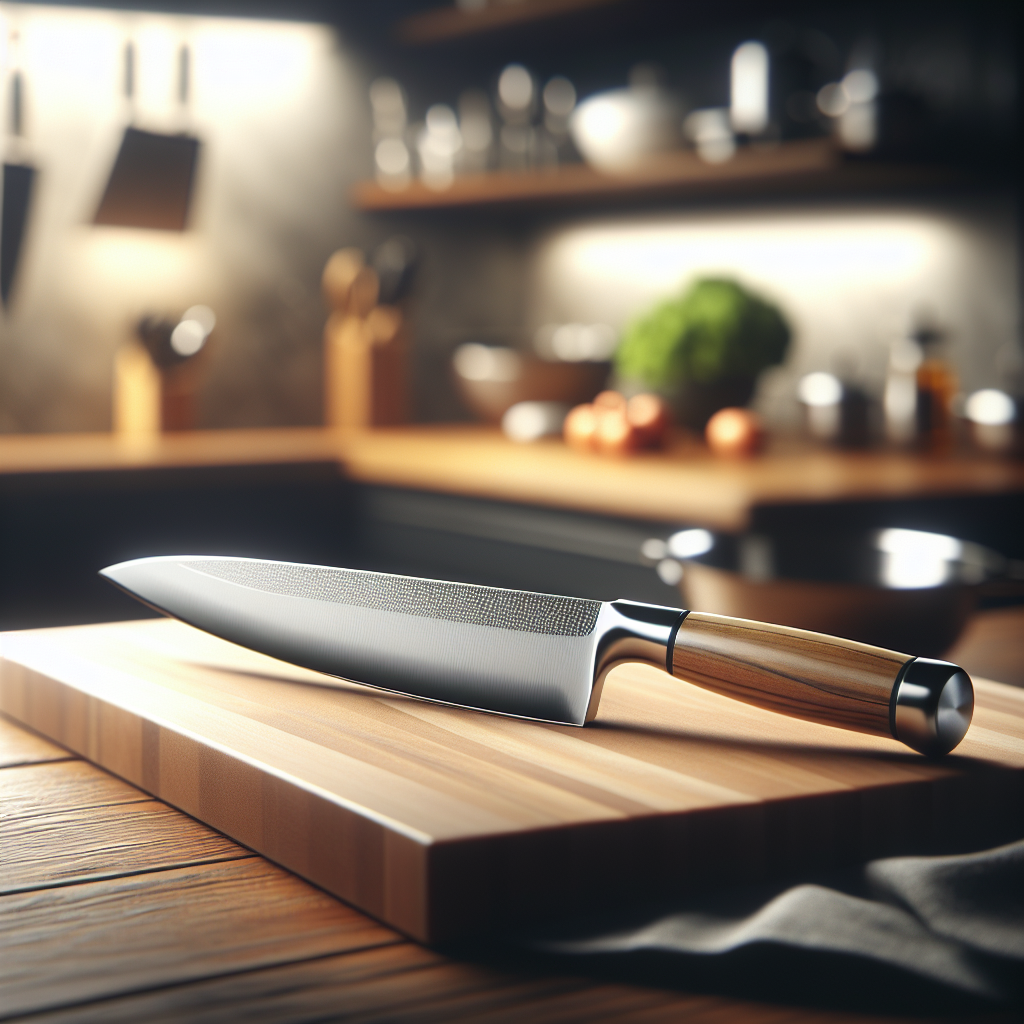Are you a teenager who is interested in honing your culinary skills and gaining more confidence in the kitchen? Look no further! Tastepan has got you covered with our expertise in cooking tips and techniques. Our comprehensive guides and videos will help you master the art of cooking, whether you want to improve your knife skills, perfect your grilling game, or uncover the secrets of baking. With our guidance, you’ll become a kitchen pro in no time, boosting your confidence and impressing your friends and family with your newfound culinary abilities.

The Importance of Knife Skills
Safety First
When it comes to working in the kitchen, safety should always be the top priority. This is particularly important when handling knives, as they can be dangerous if not used properly. By mastering knife skills, you can greatly reduce the risk of accidents and injuries. Learning how to hold a knife correctly, practicing proper grip and posture, and being aware of your surroundings can help prevent mishaps in the kitchen.
Efficiency in the Kitchen
Knife skills are not just about safety, they also play a key role in improving your efficiency in the kitchen. By learning the correct techniques for different cuts and being able to execute them with ease, you can save time and effort in your food preparation. Whether it’s slicing through vegetables with precision or deboning meat with finesse, having good knife skills can make your cooking process much more streamlined and enjoyable.
Versatility in Cooking
Good knife skills allow you to be more versatile in your cooking. By mastering different cutting techniques, you can easily adapt to various recipes and create a wide range of dishes. From julienning vegetables for stir-fries to dicing onions for soups, having the ability to make clean and precise cuts opens up a world of culinary possibilities. With practice, you can become confident in your ability to handle any ingredient and tackle any cooking challenge that comes your way.
Knife Anatomy
Understanding the Parts of a Knife
Before diving into knife skills, it’s important to understand the basic anatomy of a knife. A typical chef’s knife consists of several key parts: the blade, the handle, the bolster, and the tang. The blade is the sharp edge of the knife that does the cutting, while the handle is where you grip the knife. The bolster is the thick, metal area between the blade and the handle, providing balance and stability. The tang refers to the extension of the blade into the handle, which can be full or partial. Understanding these parts will help you choose the right knife for the task and handle it with confidence.
Choosing the Right Knife for the Task
Not all knives are created equal, and choosing the right knife for the task at hand is essential for achieving the best results. Different knives are designed for specific purposes, such as slicing, dicing, or boning. A chef’s knife is a versatile option that can handle a variety of cutting tasks, while a paring knife is great for intricate work. Other specialty knives, such as a bread knife or a fillet knife, have their own unique features and functions. It’s important to have a well-rounded collection of knives that cater to your cooking needs and preferences.

Basic Knife Techniques
Grip and Posture
Proper grip and posture are fundamental to developing good knife skills. The grip is how you hold the knife, and it should feel secure and comfortable in your hand. The most common grip is the “pinch grip,” where you hold the knife’s handle between your thumb and index finger while resting the other fingers on the handle. This grip provides control and precision. Posture is equally important, as it affects your stability and range of motion. Stand with your feet shoulder-width apart, knees slightly bent, and keep your non-knife hand safely away from the blade. By practicing proper grip and posture, you’ll be able to maneuver the knife with ease and confidence.
The Rocking Motion
The rocking motion is a basic technique used in many cutting tasks, such as chopping herbs or mincing garlic. To execute the rocking motion, place the tip of the knife on the cutting board and use a rocking motion from the tip to the heel of the blade while keeping the blade in contact with the cutting surface. This technique allows you to make precise, repetitive cuts without lifting the knife off the board, saving time and effort. Mastering the rocking motion will greatly enhance your efficiency in the kitchen and make chopping tasks a breeze.
The Chop and Slide Technique
The chop and slide technique is another essential skill to master in the kitchen. This technique is commonly used for larger ingredients, such as onions or bell peppers. Start by cutting off the top and bottom of the ingredient, then make a vertical cut down the center. Place one half of the ingredient flat side down on the cutting board and make horizontal cuts without cutting through the root end. Finally, slide the knife along the cutting board to create evenly sized pieces. This technique allows for quick and precise chopping, ensuring consistent results in your recipes.
Knife Care and Maintenance
Cleaning Your Knives Properly
Keeping your knives clean is crucial for both their longevity and your safety. After each use, wash your knives with warm, soapy water, ensuring that you clean both the blade and the handle. Avoid soaking your knives for prolonged periods as this can damage the blade and handle. Use a gentle scrub brush to remove any remaining food particles and dry your knives thoroughly to prevent rusting. Additionally, it is essential to hand wash your knives rather than putting them in the dishwasher, as the extreme heat and abrasive detergents can cause damage. By taking care of your knives and keeping them clean, you’ll ensure that they remain sharp and in optimal condition.
Storing Your Knives
Proper storage of your knives is essential to prevent accidents and maintain their sharpness. The best way to store knives is by using a knife block, a magnetic strip, or a knife roll. These storage options keep your knives organized and easily accessible while protecting the blades from damage. If you prefer to store your knives in a drawer, use blade guards or protective covers to prevent them from getting dull or causing injuries. Always make sure the knives are safely covered and stored in a designated area, away from the reach of children or pets.
Sharpening and Honing
Regular sharpening and honing are necessary to maintain the sharpness and performance of your knives. Sharpening involves removing small amounts of metal from the blade to create a new, sharp edge. This can be done using a sharpening stone, a sharpening steel, or an electric knife sharpener. Honing, on the other hand, involves straightening the edge of the blade to ensure it remains aligned and sharp. A honing steel or honing rod is typically used for this purpose. It’s important to develop a regular sharpening and honing routine to keep your knives in optimal condition and ensure safe and efficient slicing and cutting.

Building Knife Confidence
Start Slow and Practice
Building knife skills takes time and practice, so it’s essential to start slow and focus on the basics. Begin by practicing simple cuts, such as slicing and dicing vegetables, and gradually move on to more advanced techniques. Take your time to familiarize yourself with the knife, its weight, and how it feels in your hand. As you gain confidence, you can start experimenting with different ingredients and recipes. Remember, Rome wasn’t built in a day, and neither will your knife skills. Embrace the learning process, be patient with yourself, and celebrate your progress along the way.
Focus on Safety Measures
When practicing knife skills, it’s crucial to prioritize safety at all times. Always work on a stable and clean cutting surface, such as a cutting board, to prevent the knife from slipping. Keep your fingers away from the blade by using the proper grip and curling your fingertips inward. Be mindful of your surroundings and avoid distractions while handling a knife. If you find yourself feeling overwhelmed or rushed, take a step back and regroup. Staying focused and alert will help prevent accidents and ensure that your knife skills practice is both safe and enjoyable.
Set Measurable Goals
To build confidence in your knife skills, it can be helpful to set measurable goals. For example, aim to chop an onion in under a minute without any mistakes, or practice a specific cutting technique until you can consistently achieve uniform results. By setting realistic and attainable goals, you can track your progress and feel a sense of accomplishment as you reach each milestone. Remember, consistency is key when it comes to building confidence, so make a habit of practicing regularly and challenging yourself with new tasks and techniques.
Mastering Knife Cuts
Julienne
Julienne is a classic knife cut that produces long, thin strips of ingredients. To julienne, start by cutting off the top and bottom of the ingredient to create a flat surface. Slice the ingredient lengthwise into thin, uniform planks, then stack several planks and cut them into matchstick-like strips. Julienne cuts are commonly used for stir-fries, salads, and garnishes, adding texture and visual appeal to dishes.
Brunoise
Brunoise is a fine dice cut that creates tiny, uniform cubes of ingredients. To brunoise, start by julienning the ingredient into thin matchsticks. Then, gather the matchsticks and make small, even cuts to create tiny cubes. Brunoise cuts are often used in dishes that require precise and delicate presentation, such as sauces, soups, and fine dining dishes.
Dice
Dice is a versatile knife cut that creates evenly sized cubes of ingredients. To dice, start by cutting off the top and bottom of the ingredient to create a flat surface. Make vertical cuts lengthwise, about halfway through the ingredient, without cutting through the bottom. Then, turn the ingredient on its side and make horizontal cuts to create cubes. Diced cuts are commonly used in many recipes, from stews and soups to salads and salsas.
Chiffonade
Chiffonade is a cutting technique often used for leafy greens or herbs. To chiffonade, stack several leaves on top of each other, then roll them tightly into a cigar shape. Make thin, even slices across the roll to create long, delicate ribbons. Chiffonade is great for adding a touch of elegance to dishes, such as garnishing soups or salads.
Mince
Mincing involves chopping ingredients into very fine pieces. To mince, start by finely dicing the ingredients. Then, use a rocking motion with the knife to repeatedly chop the ingredients until they reach the desired fineness. Mincing is commonly used for garlic, ginger, or herbs, adding flavor and texture to various dishes.
Knife Safety Tips
Always use a Cutting Board
Using a cutting board is essential for both protecting your knives and ensuring your safety. Never cut directly on countertops or other surfaces that can damage the blade. Choose a stable cutting board made of wood, plastic, or bamboo that won’t easily slide or move during use. Place a damp cloth or a non-slip mat under the cutting board to further secure it in place. By using a cutting board, you’ll prevent accidents and keep your knives in good condition.
Avoid Distractions
When handling a knife, it’s important to stay focused and avoid distractions. Cooking can be a busy and bustling activity, but it’s crucial to dedicate your attention to knife work. Avoid answering phone calls, checking messages, or engaging in conversations while using a knife. Instead, create a calm and focused environment where you can concentrate on your knife skills. By eliminating distractions, you’ll reduce the risk of accidents and maintain your concentration on the task at hand.
Keep Fingers Away from the Blade
One of the key safety practices when using a knife is to keep your fingers away from the blade. Always position your hand and fingers so that they are safely behind the cutting edge. The proper grip, with your fingers curled inward, helps to ensure that your fingertips are protected. When making cuts, use a gentle, controlled motion that keeps your hands away from the blade’s path. By keeping your fingers away from the blade, you’ll greatly minimize the risk of accidental cuts and injuries.
Using Knives for Recipe Preparation
Slicing Fruits and Vegetables
Knives are essential tools for slicing fruits and vegetables in a variety of recipes. They allow you to create consistent and uniform slices that enhance the presentation and texture of your dishes. When slicing, start by choosing a suitable knife for the task, such as a chef’s knife for larger ingredients or a paring knife for smaller ones. Use a gentle sawing motion, moving the knife back and forth while applying downward pressure to cut through the ingredient. Whether you’re slicing juicy tomatoes for a salad or crunchy apples for a pie, a well-executed slice can transform your recipe.
Trimming and Boning Meats
In addition to fruits and vegetables, knives are essential for trimming and boning meats. Trimming involves removing excess fat, skin, or connective tissue from the meat to improve its appearance and taste. A boning knife, with its narrow and flexible blade, is ideal for this task. When boning, carefully follow the natural contours of the meat, using the tip of the knife to maneuver around bones or joints. With proper knife skills, you can efficiently trim and bone meats, ensuring they are ready for cooking or presentation.
Garnishing Techniques
Knives play a significant role in creating beautiful garnishes that elevate the visual appeal of your dishes. From carving intricate designs on fruits and vegetables to creating decorative shapes from cheese or chocolate, garnishing techniques require precision and finesse. Having good knife skills allows you to transform ordinary ingredients into stunning works of art. With practice, you can easily impress your guests with restaurant-quality garnishes that add an extra touch of elegance to your meals.
Knife Skills for Young Chefs
Getting Kids Involved in the Kitchen
Teaching children knife skills at a young age is not only a great way to spend quality time together but also sets them up for a lifetime of confident and safe cooking. Start by introducing them to age-appropriate tasks, such as holding the handle of the knife while you guide their hand in a controlled slicing motion. As they become more comfortable, gradually increase their involvement by allowing them to handle the knife under your supervision. Encourage their curiosity, answer their questions, and make the learning experience fun and engaging. By nurturing their knife skills, you’re empowering them to create delicious meals while instilling a sense of responsibility and independence in the kitchen.
Age-Appropriate Tasks and Techniques
When teaching knife skills to young chefs, it’s important to assign age-appropriate tasks and techniques. Younger children can start with simple tasks, such as tearing lettuce or using a child-safe knife to cut softer ingredients like bananas or cucumbers. As they grow older and their motor skills develop, they can progress to using safer versions of adult knives, such as knives with rounded tips or serrated blades. Always supervise children closely when they’re using knives and reinforce the importance of safety measures. By gradually introducing them to more challenging tasks and fostering their confidence, you’re setting them up for a lifetime of culinary success.
Advanced Knife Skills
Butterfly Cut
The butterfly cut, also known as spatchcocking, is a technique commonly used for poultry or larger cuts of meat. It involves removing the backbone and flattening the meat to ensure even cooking and faster cooking times. To butterfly, start by placing the meat breast-side down and make a vertical cut along one side of the backbone. Repeat the same cut along the other side, then and remove the backbone. Finally, flip the meat over and press down firmly to flatten it. The butterfly cut allows for quicker and more even cooking, resulting in juicy and flavorful meats.
Filleting Fish
Filleting fish is a skill that requires precision and a steady hand. Start by removing the scales and fins of the fish using a fish scaler or a knife. Make an incision behind the gills, following the natural curve of the fish, and carefully slice down until you reach the backbone. From there, run the knife along the backbone, making long, smooth strokes to separate the flesh from the bones. Carefully lift the fillet away from the bones, then repeat the process on the other side of the fish. Filleting fish allows for easy removal of bones and ensures that you can cook the fish in various ways, from pan-searing to poaching.
Segmenting Citrus Fruits
Segmenting citrus fruits is a technique that allows you to remove the skin, pith, and membranes, leaving behind the juicy and flavorful segments. Start by cutting off the top and bottom of the fruit to create a flat surface. Then, carefully slice off the skin and pith, following the natural curve of the fruit. Once the skin and pith are removed, hold the fruit over a bowl to catch any juice. Insert the knife between the membranes and gently release the segments. Segmenting citrus fruits is perfect for adding bright and refreshing bursts of flavor to salads, desserts, or cocktails.
In conclusion, mastering knife skills is a valuable and essential aspect of being a confident and efficient cook. By prioritizing safety, understanding the anatomy of a knife, and practicing basic knife techniques, you can build a strong foundation for your culinary journey. With proper knife care and maintenance, setting measurable goals, and continuously challenging yourself, you can enhance your skills and become a kitchen pro. Whether you’re preparing simple everyday meals or tackling advanced recipes, good knife skills contribute to the overall success and enjoyment of your culinary endeavors. So sharpen your knives, hone your techniques, and embrace the art of cooking with confidence. Happy slicing and dicing!

